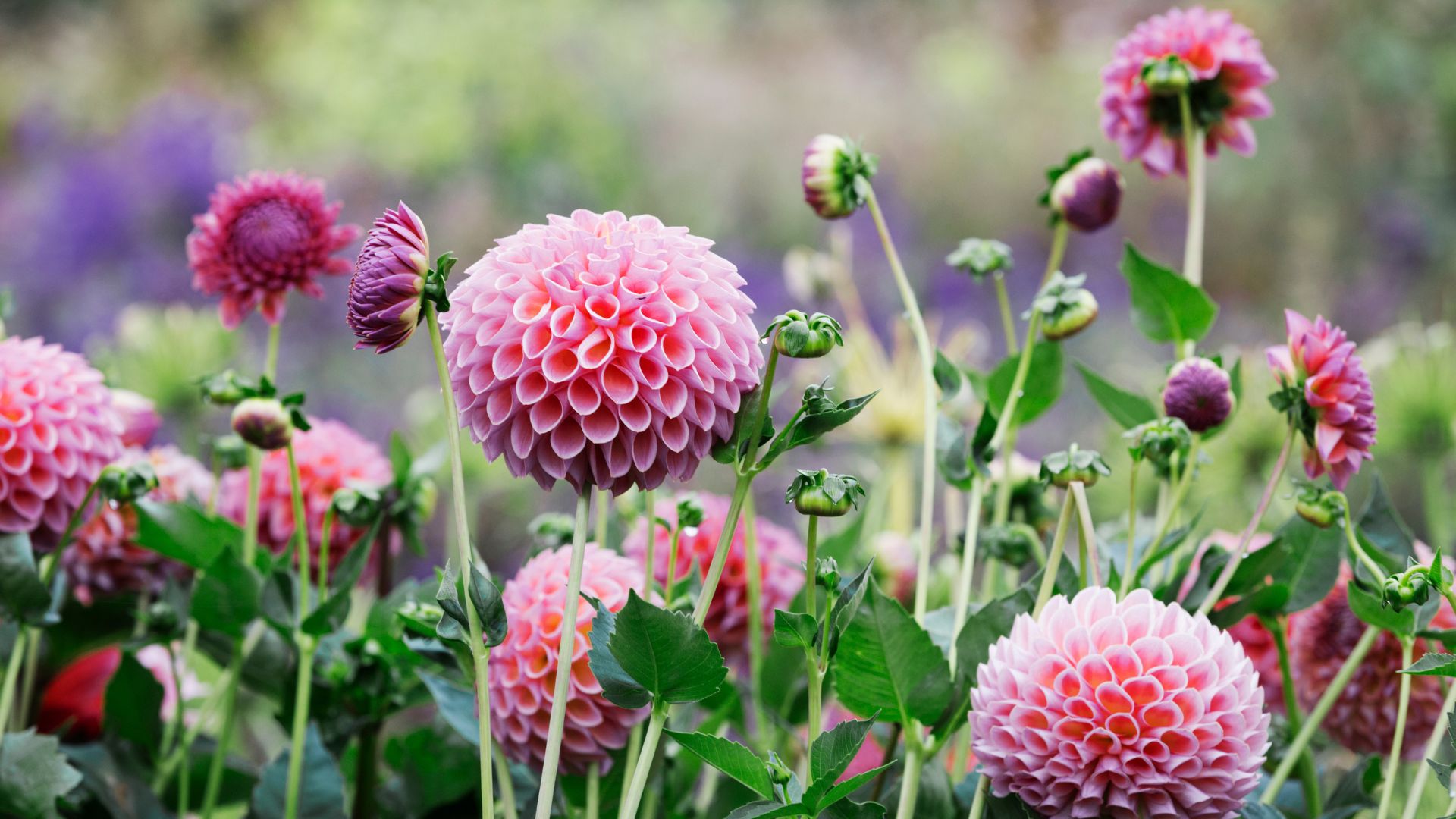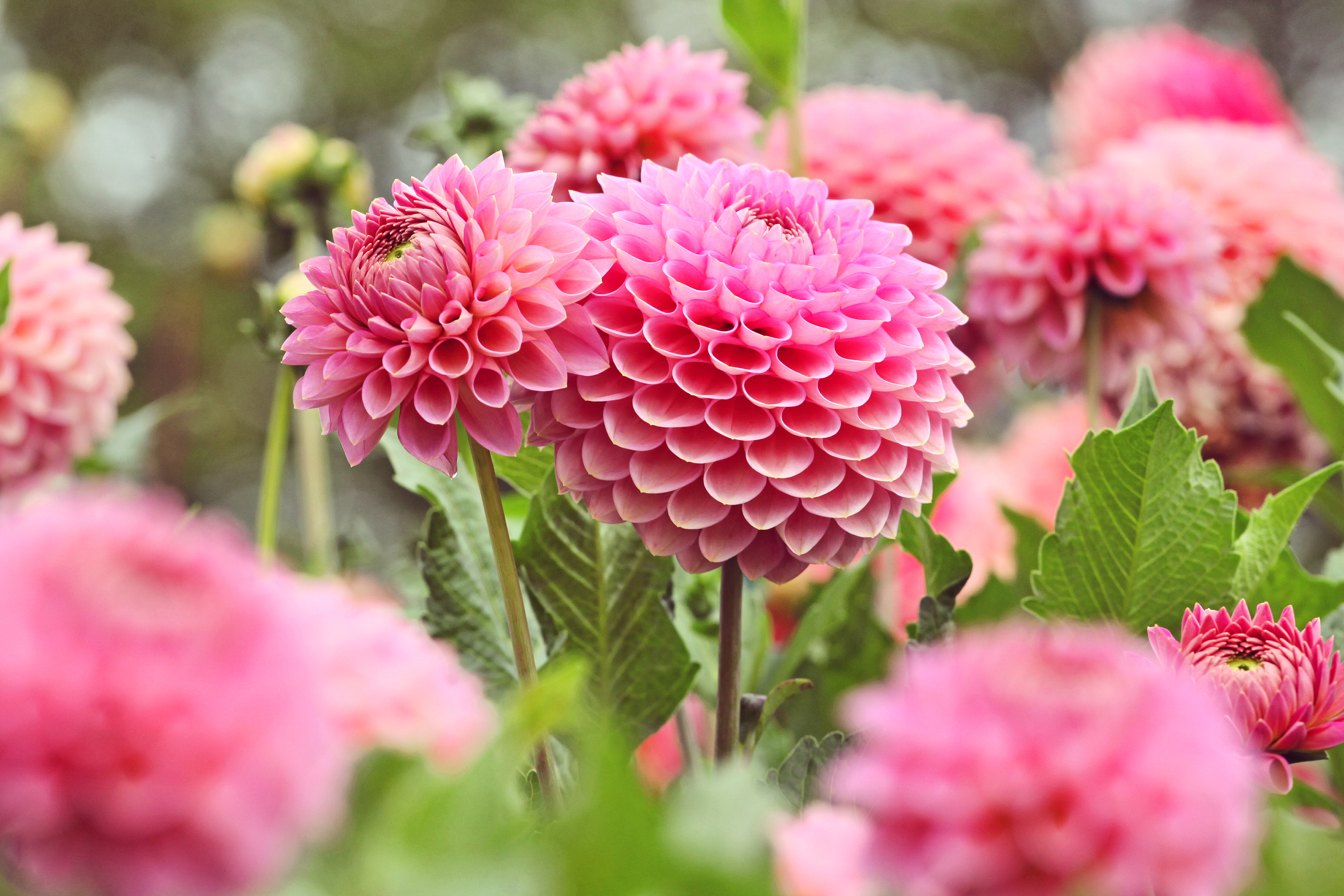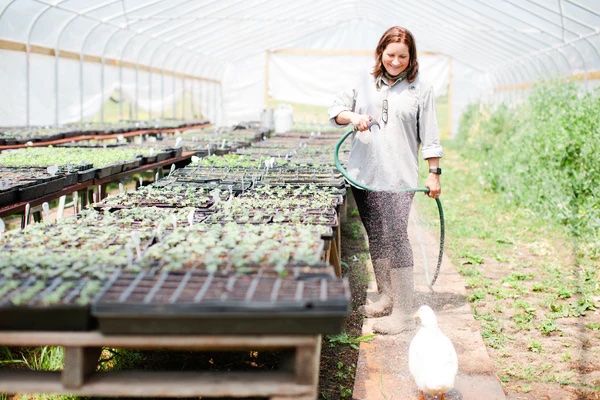When to Lift Dahlias — 3 Simple Steps a Pro-Gardener Says You Need to Take to Protect These Flowers
An expert reveals her fail-safe methods for lifting these blooms correctly before the frost

Dahlias are prolific bloomers. If you’re lucky, you may still have a few flowers clinging onto their last petals before the winter winds blow them away. But beautiful as they are, these flowers need taking care of, especially at this time of year.
Lifting and storing these blooms during the winter is the key to dahlia care. Native to the warm climates of Mexico and Guatemala, dahlias are tender plants, meaning they will not survive winter frosts. This doesn’t mean cooler climates can’t enjoy these flowers, though, as lifting dahlia tubers is a well-practiced technique for protecting the tubers before frosts hit.
But knowing how and when to lift and store your dahlia tubers is an area of expertise the pros are well-experienced in. Thankfully, they’ve shared their top tips on how to preserve your dahlia plants over the winter, and they are ready for them to be planted out next spring. Here's everything you need to know.
When is the best time to lift dahlia tubers?

Timing is crucial for tender plants. Lift them too soon, and you’ll lose flowering time; too late, and you risk damaging your tubers to frost and rot. That's why knowing how to overwinter dahlias is crucial. For dahlia expert Deborah Stone at Stone Hollow Farmstead, it’s a lengthy task that has to start in the fall on her flower farm.
"Here at Stone Hollow Farmstead we grow 10,000 plants, so we begin digging in October to have everyone divided and stored in time," says Deborah. "They need the opportunity to shifting into a dormant state of rest before March, when we start to wake them up and ship to clients."
One of the easiest ways to know when your dahlias are ready to lift is to look at the color of the foliage. When the stem and leaves have darkened and are starting to die back, that’s a good indication that they’re ready to be lifted.
It’s important to pay attention to your local climate though. Depending on your yard's USDA hardiness zone, your first frost may come a lot sooner than you expect, and you don’t want the tubers to be exposed to temperatures below 32ºF.
The Livingetc newsletters are your inside source for what’s shaping interiors now - and what’s next. Discover trend forecasts, smart style ideas, and curated shopping inspiration that brings design to life. Subscribe today and stay ahead of the curve.
How to lift dahlias

Technique is everything when it comes to lifting these fall-blooming flowers like a pro. The last thing you want is to damage a tuber and limit your future flowers. Luckily, Deborah has revealed her full routine for lifting her dahlias.
What You'll Need:
• Storage bins (Deborah uses 24" x 16" x 4 1/2" Collapsible Black Plastic Produce Bins with Locking Sides). We also recommend this Clear Storage Latch Box from Amazon.
• Pitchfork, like this Fiskars Garden Fork from Walmart.
• 28-inch garden loppers. We love these Fiskars 28" Loppers priced at $25.99 from Amazon.
• Zip-tie nametags. This 100 Pcs Zip Ties Write on Ethernet from Walmart should do the trick.
Now, it's time to lift your beloved dahlia tubers. Here is a guide on exactly what you need to do.
Step 1 - First, use the loppers to cut back all stems, leaving about a 6-9 inch stem 'handle' to gently pick up the dahlia clumps once dug.
Step 2 - Using a pitchfork, rock the dahlia clumps gently from both sides if necessary. Once loosened, take the handle and gently free the tubers' hair roots from the soil. Be extremely careful at this stage.
Step 3 - Apply a name tag to the tuber so you know which dahlia variety it is and move to the next one. Once all name tags have been applied, go back and remove most of the stem handle to a length that will fit in your storage container.

Stone Hollow Farmstead is a family business that has grown from a natural love for the land and nurturing the process to producing the finest cheeses, honey, specialty foods, botanicals, cosmetic extracts, and cosmeceuticals. Honoring both her parents' and her grandparents' heritage, Deborah Stone founded Stone Hollow Farmstead in 1999 with her husband, Russell, and daughters, Fallon and Alexandra.
How should you store dahlia tubers?

If you've removed your flowers from their raised beds, remember that the hard work doesn’t stop there. How you store them is equally important, especially in protecting them from frost and rot while in storage.
Dahlia expert Deborah recommends utilizing a combination of vermiculite, peat moss, and pearlite.
"We line our storage bins with butcher paper," says expert Deborah. "Cut lengths of 60 inches and lay them in the bin to make a cross shape. You now can pour your storage medium into the bin, and it won’t spill out the holes of the bin. We use 4 parts peat moss to 1 part vermiculite and 1 part pearlite."
In a pinch, dry newspaper is a good alternative to dry compost for storage tubers. Just be sure to keep them in a frost-free storage place, such as a greenhouse or in a dry shed or garage.
FAQs
How Do I Stop My Dahlia Tubers From Rotting?

Rotting or shriveling tubers is a common problem when it comes to dahlias. But the good news is expert Deborah has some steps you can take to control this common mishap.
"Dahlias need to be stored at 40-50ºF with a humidity of 70-80%," says expert Deborah. "Check your tubers often to make sure there is no mold or rot. If there is condensation build up in a container you know it’s too moist."
She continues: Remove the rot, clean off the mold, and check your storage medium for dampness. If the tubers are shriveling and seem too dry, moisten the soil and stir, making sure tubers are buried before closing."
When should I start waking up dahlia tubers?
"Waking up dahlias" is a term for when a gardener brings the tubers out of dormancy and into active growth.
But knowing when to wake them is a question even the most experienced gardener can struggle with. As Deborah explains, this decision is based on your local area and last frost dates. But as a general rule, aim to wake them around 4 weeks before you want to plant them out.
Deborah explains, "Planted tubers begin growing when the soil begins warming in spring. We begin the 'wake up' process in February because we have a long growing season here in Alabama."
"Consider when your planting time will begin, and you can begin warming your tubers a month before. This allows the eye on the tubers to develop, and you can confirm you’re planting a viable tuber. We plant our first succession in the greenhouse in March. Then in the fields later on April 10 and May 10."
Do dahlias need to be frosted before lifting?
According to expert Deborah, no they don’t. Though it’s easier to wait until a frost has started to change the plant’s foliage color, you don’t necessarily need to wait until the first frost to do so.
In fact, if your yard has heavier clay-based soils and you’re prone to particularly wet autumns, lifting the tubers early could be more beneficial in preventing rot rather than leaving the tubers in the ground until the first frost.
Matilda Bourne is a freelance homes, gardens and food writer, stylist and photographer. Known for creating and capturing content for multiple international brands, her work has been featured in The Telegraph, The Daily Mail, and Hello! magazine. When she’s not writing, you can usually find her tending to her much-loved garden and scouring thrift stores for vintage furniture.